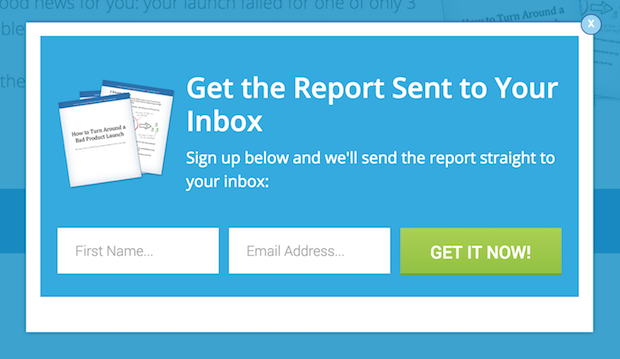Building Chinese landing page that targets visitors in China requires taking into account an additional set of guidelines besides the typical requirements for landing pages.
First, let start with the definition of – a landing page (or LP) is where your potential customer “lands” first after clicking your link in the search results, social media or an email. Making sure that landing page design is clear, focused and the content is easy to understand is the key in converting visitors to customers.
Before we look at the specific guidelines that are relevant to building a Chinese landing page, let’s make sure that the general page structure follows best practices applicable to all types of landing pages.
Let’s start off with a quick rundown of those guidelines that are applicable to all types of landing pages:
- Having clear and concise headline up top
- Strategic placement of a large and distinctive CTA (call to action) button
- Using interesting and visually appealing images
- Making sure that the main text clearly explains the offer and is going from general to detailed description as the reader moves down the page
Now, let’s list the specific requirements for Chinese landing pages along with the common mistakes that companies often make in creating them:
Chinese landing page design: do’s and don’ts
#1 Use native translation
While using native translation should be the obvious rule, a surprising number of foreign companies still cut corners on this one. Re-purposing original landing pages for Chinese market by using machine translated text or simply relying on low-quality translations would make such landing pages completely useless and counterproductive.
Always use a professional translator to write proper copy for your Chinese landing pages and make sure that they are proofread by native Mandarin speakers.
#2 Remove links to blocked social media
While re-purposing landing pages for Chinese market, many companies forget to remove standard links to their social media accounts that are inaccessible in China anyway. Not only those Facebook, Twitter, Google+ and Instagram links will appear broken and wouldn’t even display an icon, they will significantly slow down Chinese landing page loading time.
Ideally, a page loading time should not exceed 5 seconds, although that is often hard to achieve with overseas hosting (more on it below)
#3 Optimize your Chinese landing page loading time
Loading time is almost always an issue for sites hosted outside of China. As long as your company doesn’t have a local business registration – hosting in China is not permitted. The next best option would be to get a hosting in Hong Kong. Some Hong Kong based hosting providers would often advertise “fast China route” options without physically having to host on the Mainland’s servers.
Alibaba Cloud is a popular hosting solution that is cheap and easy to sign up for. However, make sure that you select Hong Kong based servers when buying their hosting package.
#4 Embed videos from local platforms
It is often a good choice to have embedded videos on a landing page, however, if it is a YouTube one – it won’t work in China (YouTube is one of the blocked sites).
The solution is to setup an account on YouKu, Chinese YouTube equivalent, upload your video there and link to it from your Chinese landing page. There is one caveat here however – the video will be preceded by an advertisement and those are notoriously long and can even run for up to 90 seconds. The only way to play videos without pre-roll ads is to sign up for a paid YouKu account. Although not cheap (currently RMB 5,000 per year), it would make sense to purchase if you are planning to host more videos on the platform in the future.
The last tip about the videos – if they are in English, make sure to either provide a Chinese voiceover or, at the very minimum, Chinese subtitles.
#5 Integrate share buttons and links to Chinese social media
If you already have Chinese social media presence on Weibo, YouKu, WeChat or other platforms, make sure to include links to those sites on your Chinese landing page or, in the case of WeChat, display official account’s QR code. This will not only demonstrate to your visitors that you have an established local presence but will also help in getting more followers to your Chinese social media channels.
In case you didn’t yet setup those social media account in China, at least include sharing buttons to Weibo and WeChat.
#6 Localize the contact form
If your Chinese landing page is designed for collecting users’ data, make sure that the contact form is properly translated to Chinese and don’t leave any English field names to avoid confusion.
Also, keep in mind that while your English form may have separate fields for first and last names, Chinese equivalent would typically use just one name field for both the surname (one character) and the given name (one or two characters).
#7 Optimize for mobile
Mobile optimization of a landing page is extremely important for Chinese market as most traffic will come from mobile devices. It’s essential to use responsive design for your Chinese landing page ensuring that it displays correctly on most type of mobile screens.
Once the landing page is displayed on a small mobile screen, it is critical to make sure that most relevant information such as the headline and CTA (call to action) shows up “above the fold” rather than relying on users to scroll down the page.
#8 Test, test, test
Finally, your Chinese landing page is ready to go live and now you can just sit back and relax. If only that was true… The fact is that you can never be 100% sure that your page works correctly unless you, or someone else on your behalf, would test it from within China.
Although, there are some online tools available to test loading speed and accessibility of sites in China, they cannot be relied on completely as they wouldn’t show common display problems, broken links or other errors. Therefore, it is best to have someone to test your Chinese landing page in China using inspector browser option (F12 hotkey in most browsers) to note and record any errors and loading time.







